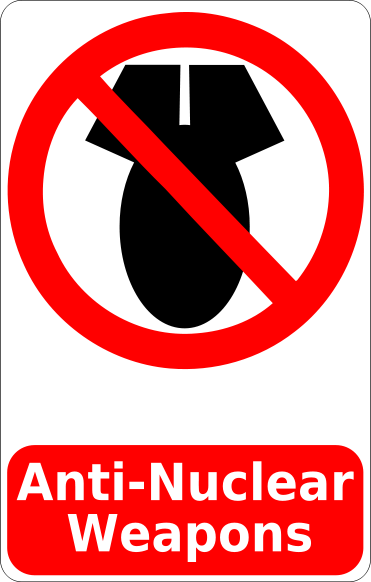Spring 2013 Color Trends
Even though spring is several months away, one can still plan their spring wardrobe and color trends accordingly. Pantone, one of the most reputable sources for accurate color trends, has declared 10 key colors to look for in stores and on runways in the coming months. Some colors have been on the list before and others are fresh and new, like Bamboo, a bright combination of green and yellow, or African Violet, a mild opaque purple with hints of grey. Seattle in Style displays a peek of the season's hottest colors to ponder and remember when shopping this spring.
Dusk



Bamboo



Lemon



Poppy


Hervé Léger

Nectarine
African Violet
Alternatives to yucky acrylic yarn
It's a familiar dilemma for many knitters. You want to knit something machine-washable and tough, but you don't want to use crappy Red Heart Super Saver acrylic yarn. Maybe you are making something for a baby or a pet, or maybe you are knitting for a charity that only accepts projects in acrylic yarn. But don't despair, you have options!
Wraptastic: if you're too dumb to use plastic wrap
Of all the "There's gotta be a better way!" ads out there, the Wraptastic stands apart as being particularly ridiculous. The ad itself employs the age old trick of having normal looking people encounter immense difficulties using a common household product. In this case, it's plastic wrap and aluminum foil.
Nuclear Debate 3 - Introduction
There are two major intertwined streams that are the basis of the Atomic age; nuclear power and nuclear weapons. They were born together in the early 1940s in the midst of war. Nuclear weapons helped to end World War II in the Pacific. During the Cold War, the race to build and deploy nuclear weapons on both sides of the Iron Curtain terrified the world in the 1950s. At the same time, commercial nuclear power reactors were built in Russia, England and the United States to utilize the vast potential locked in the uranium atom and demonstrate that nuclear chain reactions could have an important peaceful application.
Reacting to the horror and devastation of the nuclear bombs dropped on Japan and the growing arsenals of nuclear weapons, major protests against nuclear weapons began with the Campaign for Nuclear Disarmament’s first Aldermaston March in England in 1958, the Women Strike for Peace marches in sixty U.S. cities in 1961 and the Australian Peace Marches in 1964. While nuclear weapons could be deployed against military targets, their enormous destructive power was a threat to major population centers. Millions of civilians could be killed and huge areas rendered uninhabitable by nuclear war. The major strategy of the time relied on the fear of such devastation to both sides in a nuclear war was called mutually assured destruction or MAD.
Nuclear power held great promise but there were concerns that its implementation would not be as free from problems as had been promised. Issues with uranium mining, reactor safety and the disposal of nuclear waste sparked a backlash against all the positive advertising by governments and industry. These concerns prompted major protests against nuclear power in France and Germany in 1971. Hundreds of thousands of people marched against nuclear power in France and Germany during the late 1970s. The U.S. Three Mile Island accident in 1979 and the U.S.S.R. Chernobyl accident in 1986 each spurred huge protests against nuclear power by proving that the concerns of the nuclear power critics were valid.
During the 1970s, there were movements in the direction of winding down the tensions of the Cold War and reducing the nuclear weapons inventories. Unfortunately, with the election of the belligerent anti-communist Ronald Reagan, the Cold War thaw disappeared and once again the threat of nuclear rose to terrify the world. Arsenals were expanded and insane talk of a winnable nuclear war emanated from Washington, D.C. In reaction, anti-nuclear protests spread across the world once again. There was some work on nuclear disarmament during the Reagan Presidency which continues up to the present. However, massive protests still occur demanding the total elimination of nuclear weapons.
The Japanese Fukushima accident in 2011 resulted in massive protests against nuclear power generation worldwide. The Unit 4 reactor at Fukushima was severely damaged and a pool full of nuclear fuel rods may collapse and burn at any time which would threaten the entire northern hemisphere and our global civilization. Despite continued support by some governments and huge lobbying and advertising efforts on the part of the nuclear industry, worldwide support for the use of nuclear energy for weapons and power generation is waning and the Atomic Age may be drawing to a close.
If Perverts Wrote "Looper"
The fine lads at College Humor took the concepts from Rian Johnson's "Looper," put them through their perverted sex maniac minds, and came up with the following short.
Sledding Can Be Painful
This kid is a great analogy for Monday mornings. You get up, you get some momentum going, and then the brutality of your week hits your square between the legs.
Baby Laughs Uncontrollably At A Dog Eating Popcorn
Dog eats popcorn. Baby watches. Baby laughs adorably. Repeat.
10 Randomly Interesting Factoids
The "Did U Kno" Tumblr has started a video series to share those wonderfully random facts in a different medium. Enjoy learning 10 things you may not have known before, but you will now.
2012 Pitching Leaderboards -- Composite Index
Now, finally, the last of the 2012 "Spectometer" leaderboards. After this, we will commence the 2013 "Spec 66."
The final pitching leaderboard is for the "third number" of our three-number series, which is a composite of the first two.
***
Stat: "Composite Index" -- a combination of the "Command/Control" Index and the "Stuff" Index. In the same manner that OBP+ and SLG+ can be combined to get OPS+ (since OPS weighs both parts equally), the two pitching numbers (one of which measures negation of Plate Skills, indicating OBP, and one of which measures negation of Production, indicating SLG) can be combined for an indicator of OPS-against, rescaled to 100, such that the higher number is better.
Rule of thumb: A composite number over 100 indicates a chance of MLB success. Obviously, it is better when all three numbers are over 100.
***
Starters:
- Jordan Pries (22) 140-116-156
- Robert Shore (23) 127-119-146 (also reliever)
- Tyler Pike (18) 117-128-145
- Stephen Landazuri (20) 127-110-137
- Erasmo Ramirez (22) 113-107-120
- Rusty Shellhorn (22) 120-100-120
- Trevor Miller (21) 120-95-115
- Brandon Maurer (21) 103-106-109
- James Paxton (23) 95-115-106
- George Mieses (21) 101-102-103
Of note:
Hultzen [AA Jackson only] 110-131-141
Hultzen [AAA Tacoma only] 45-99-44
Paxton [before going on DL only] 62-106-68
Paxton [after returning from DL only] 115-121-136
Taijuan Walker (19) 89-87-76
Anthony Fernandez (22) [mostly High Desert] 111-90-101
Hector Noesi (25) 89-78-67
Blake Beavan (23) 78-77-55
***
Relievers:
- Carter Capps (21) 172-155-227
- Stephen Pryor (22) 117-147-164
- Bobby LaFromboise (26) 130-130-160
- Brian Moran (23) 141-115-156
- Dominic Leone (20) 102-143-145
- Danny Farquhar (25) 120-120-140
- David Colvin (23) 123-119-142
- Kyle Hunter (23) 135-105-140
- Grady Wood (22) 109-129-138
- Carson Smith (22) 113-123-136
Of note:
Carson Smith [June-July-August only; still all High Desert] 160-165-225
Matt Brazis (23) [96 batters faced] 225-230-355
***
Below age-arc (young for level):
- Capps (21) 172-155-227
- Pike (18) 117-128-145
- Ramirez (22) 113-107-120
- Maurer (21) 103-106-109
- Victor Sanchez (17) 100-98-98
***
Notes:
- We continue to note that Pries, Shore and Shellhorn all pitched in major college conferences (Pac 12 [Pries Stanford], Big 12 [Shore Oklahoma], or both in the case of Shellhorn [transfer from Washington State to Texas Tech]), so they were not really facing advanced competition in the low minors. Same goes for Brazis (Boston College -- ACC).
- We also continue to note that Smith, after he got acclimated to High Desert, was as good as Capps and Pryor.
- Paxton's post-DL numbers don't include his brilliant playoff outings, either.
- Hultzen's AAA meltdown remains a mystery, but I don't put too much stock in it, considering what he did in AA.
App review: Jigsaw Puzzle
Lately I have found myself losing steam on 100 Floors. I seem to have stalled out around floor 64 or so. The problem is that I typically want to play games on my iPad late in the evening, in between watching something on Netflix or during commercial breaks. And after about 8 p.m., my brain is completely off-line. It's the worst possible time to try playing something that requires a lot of mental engagement, either in the form of thinking (100 Floors) or reflex activity (Robot Unicorn Attack).













